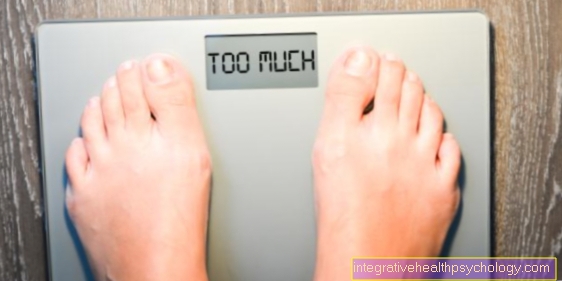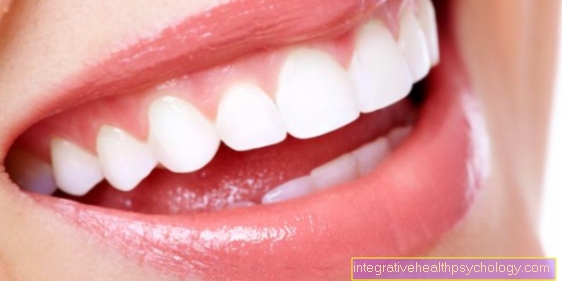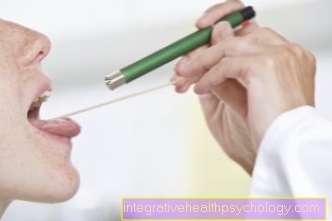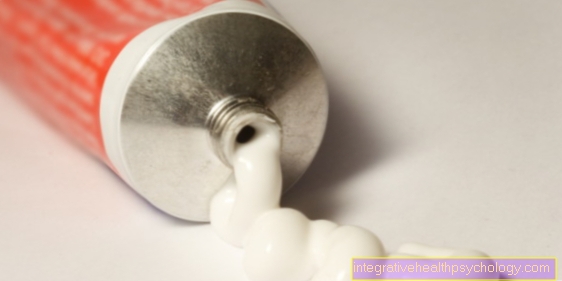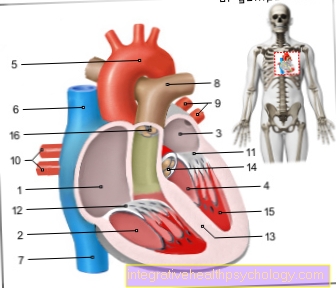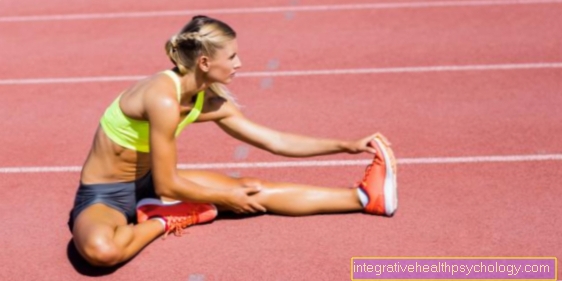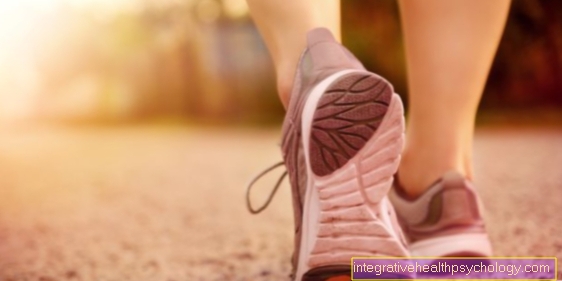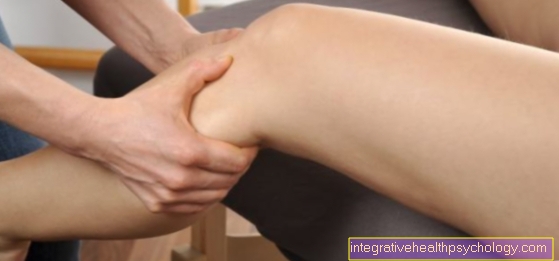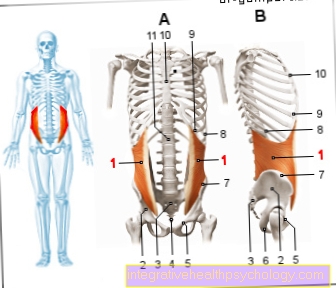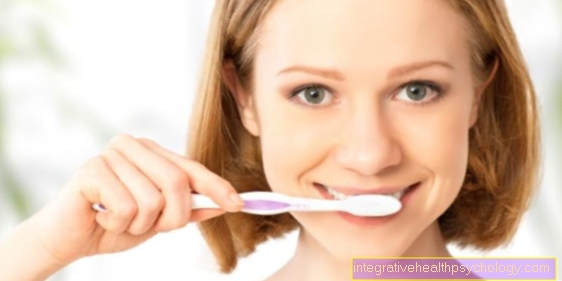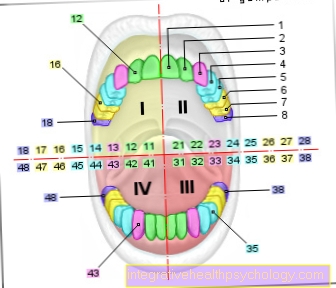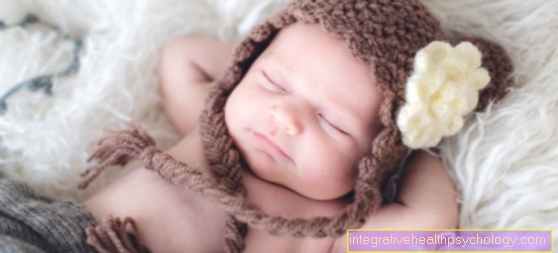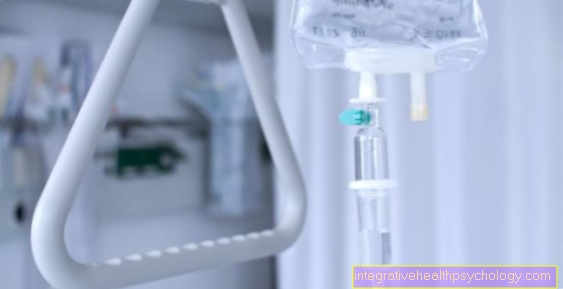Checklist for school enrollment - What does my child need for school enrollment
introduction
When the children start school, a new phase of life begins that requires some preparation. The child not only needs clothing suitable for school, but also a school bag in which many different utensils are stowed.
Most primary schools give parents a list before school starts, listing all the materials the child needs to get off to a good start. These items should be purchased before school starts so that the child is equipped from day one.
The most important items include:
- satchel
- Pencil case (fountain pen, possibly ink killer, pencil, eraser, colored pencils, sharpener, ruler)
- Lunch box
- Drinking bottle
- Sports gear
Read more on the topic: school enrollment

Satchels - what should you watch out for?
When buying a new school satchel, it is important to pay attention to the DIN 58124 label so that a certain safety standard is guaranteed. In this industry standard, for example, it is stipulated that a large proportion of the visible surface of the front and side parts consist of a material that reflects light or is self-luminous in diffuse light conditions. This is especially important in the dark season so that the students can be seen quickly by drivers.
Furthermore, the stability of a school satchel is of great importance. It should be able to withstand being filled with books as well as being thrown on the floor. Accordingly, one should pay attention to the quality of the weld and thread seams. In addition, you can make sure that the satchel has no sharp corners and edges so that the child cannot injure themselves on the satchel.
On the outside there should be extra compartments for a drinking bottle. The external side pockets for the drinks prevent a leaked bottle from getting all paper documents wet.
To ensure that the child is as comfortable as possible, it is recommended that parents take a look at the width of the straps and how they can be adjusted in length. The straps must be at least 4 cm wide and should be padded to prevent pinching or cutting into the shoulder. Another point to consider with a school satchel is the weight of the satchel. A normal school bag weighs between 1 and 1.5 kilograms when empty. If the satchel is filled with books, notebooks, etc., the rule of thumb is that the satchel should make up between 10 and 20 percent of the child's body weight.
Heavy items such as books and notebooks are carried close to the back so that the weight is optimally distributed. Accordingly, it is important to see whether the inner compartments allow this. Furthermore, the interior should also be divided in such a way that the child can balance the right and left sides with his materials and can always find his materials in an orderly manner.
The satchel must not be too big for the child, this means that it should not go over the child's shoulders, sit too low and not be wider than the child's back. In addition, it is important that the satchel is in several places on the body and is padded in these areas. The back of the satchel must be adapted to the shape of the wearer.
In addition, the satchel should have easy-to-open and close closures, which allow the satchel to be wide open and all school supplies to be easily removed without the satchel tipping over.
Last but not least, it is also important to pay attention to the color or the motifs when buying a school satchel. In the best case scenario, the child is not only involved in the purchase because of the fit, but also because of their individual color preferences.
This topic could also be of interest to you: What should my child be able to do by the time they start school?
Pencil case / pencil case - what to look out for?
A well-filled pencil case, in which all the utensils required in primary school are available, enable the child to get off to a good start in school. Pencil cases, which have their own place for each pen, are particularly recommended so that the child always has an overview of his materials.
The fountain pen with which the students learn to write plays a special role in the pencil case. There is a large selection of fountain pens, for learning to write, the fountain pens with an insensitive nib and a recessed grip (three-point grip) are particularly suitable, so that the students can learn the correct grip.
This includes ink cartridges in the pencil case to refill it; most schools expect blue ink.
In addition, a pencil should also be found in every pencil case, as it is often needed for drawing and sketching.
As a rule, the pencil lead should have a medium hardness (for example HB). When buying a pencil, attention should be paid to the quality so that the pencils can be sharpened easily, the lead does not break quickly and the pencil does not smear on the paper. A pencil comes with a sharpener and an eraser.
You can buy everything from the same brand to make sure the eraser gets the best possible results from your pencil without damaging the paper or leaving marks.
Furthermore, an eraser that is adapted to the hardness of the pencil lead is recommended. In addition to the pencil, the students also use other pens that have to be sharpened in a sharpener, so it is worthwhile for the child to buy a sharpener with two sizes, for thin and for thick pencils. Sharpeners with a collecting container for the "sharpening manure", which the child can empty over the rubbish themselves, are particularly practical.
As already mentioned, the students also need other pens, these are colored pencils. Thick wooden pencils in all colors are best for primary school students. Felt-tip pens are only compulsory in elementary school in rare cases.
It is held similarly with ink killers, some elementary schools support them, others reject them completely. This has to be clarified with the individual elementary school or with the class teacher of the child.
Furthermore, school beginners need a ruler in their pencil case in order to be able to draw clean lines and to be able to cross out writing properly. The ruler should have a certain stability and not be easy to break and have easy-to-read numbers. All of the materials listed are part of the standard range that every child should find in their pencil case. If primary schools have special material requests, let the parents know in advance.
Are you still wondering whether it might. can wait another year before starting school? Then read detailed information on this under: Is my child ready for school?
Clothing for physical education
For physical education in the gym, students need special sneakers that are only suitable for indoor sports. The sole of such shoes is light and avoids that the hall floor gets colored welts from material abrasion. In addition, the shoes should fit the children optimally and be suitable for each child's foot. You can get advice accordingly in a specialist shop.
The shoes need a sole with a cushioning capacity, which is why gymnastics or dance shoes are unsuitable; universal indoor shoes are recommended instead. In the case of young children, it is particularly important to ensure that the shoes can be opened and closed easily without having particularly complicated lacing.
There is a large selection of clothing for physical education classes. When choosing, it is crucial that the clothing fits the child well and that the child can move around easily in them. Garments can be selected that are breathable and absorb sweat particularly well. However, this is not necessary.
For the top, it is advisable to dress the child with a T-shirt or a top and to avoid long-sleeved clothing. The same goes for pants, shorts are more appropriate than long pants so that the child does not get too warm during physical education. Children with long hair should be equipped with a hair elastic so that they can hold their hair together during exercise to minimize the risk of injury.
Read more on the subject under: School enrollment
Lunch box
When they start school, the children are often at school until noon and need food that is brought from home. As a rule, sandwiches are packed for the children. So that these are not crushed or crumbled in the satchel, it is advisable to transport the bread in a lunch box and not just wrap it in paper or plastic.
There are lunch boxes in all sizes so that the lunch break remains as undamaged as possible, should a box size be chosen that does not offer much more space than the bread that the child needs to eat. This will slide back and forth and prevent the bread from falling apart. If parents want to pack their children with fruit or vegetables, such as pieces of apple or cucumber slices, lunch boxes with several compartments can be purchased. In this way, the snack does not mix with the raw vegetables and neither soften nor take on its taste.
The lunch box should be as stable as possible, as it is exposed to a lot of hardship in a school child's satchel and through their impatient hands. Furthermore, it is advisable to choose a lunch box that can be distinguished from the lunch box of the classmates so that the children can recognize their own box and do not confuse it with others. It is possible to buy your child a lunch box with a motif, such as cars for the boys or horses for the girls, or you can simply label the lunch box with the child's name.
Drinking bottle
When they start school, most parents are responsible for their children's meals. A healthy diet also includes adequate fluid intake, so that drinks are taken with you to school.
Drinking bottles in very different variations are used to transport the liquid. A suitable drinking bottle for a primary school child should not have too large a capacity so that the drinking bottle takes up as little space as possible in the school bag and is not too heavy. In addition, when buying a drinking bottle for the child, it should be ensured that the bottle can be cleaned easily from the inside. The bottles should either have the largest possible drinking opening or they should have a small drinking opening and allow the lid to be unscrewed and thus also have a large opening.
The bottles with the small opening for unscrewing have the advantage that children with their small mouths can drink better from them without spilling water or choking.
Soft plastic is not suitable as a drinking bottle material as it is too unstable and too short-lived. Furthermore, a bottle made of glass is also unsuitable for elementary school children, as they pose a risk of injury due to their fragility and are very heavy. The bottle should be made of a light yet stable material, such as hard plastic, and allow warm drinks to be filled, as parents like to give their children warmed water or lukewarm tea to school in winter.
Read the next article on the topic of everyday school life at this point: School year


